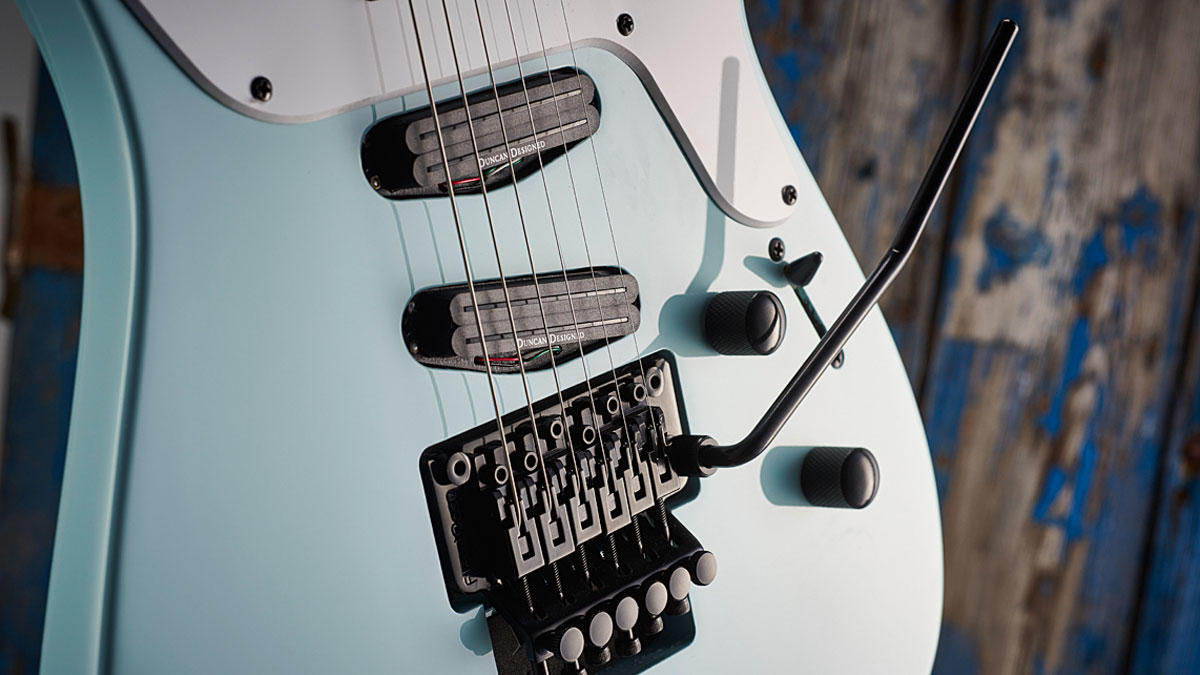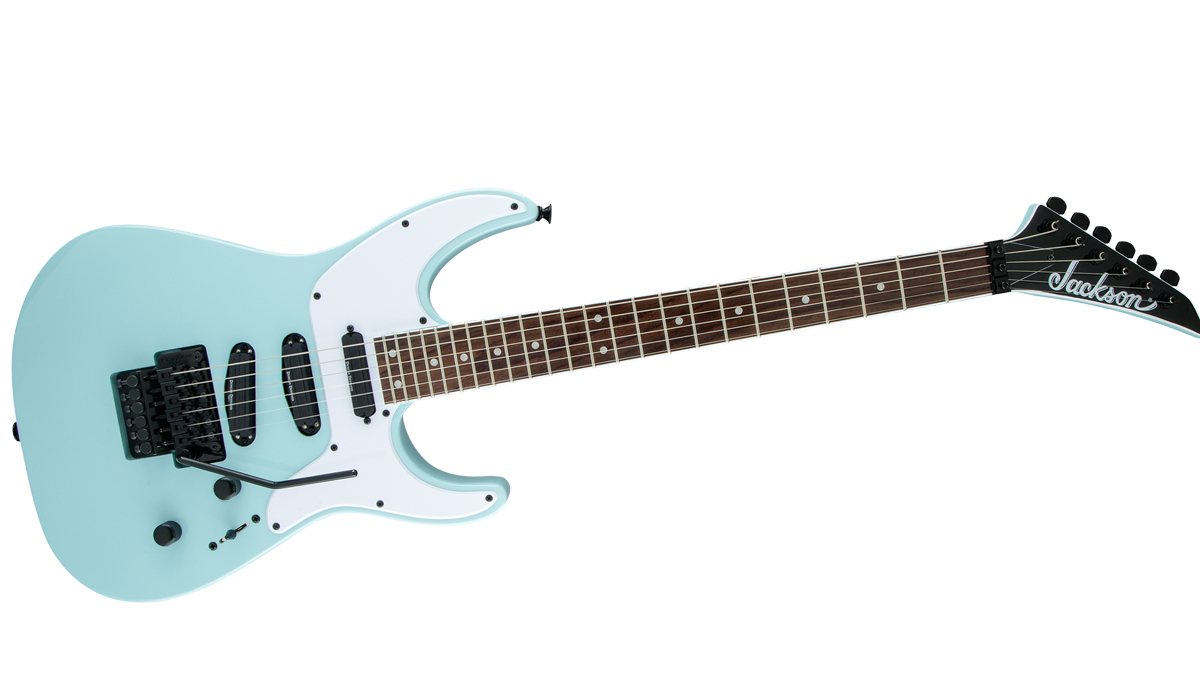MusicRadar Verdict
If you have never played a Jackson, the SL4X will blow your mind.
Pros
- +
Super cool.
- +
Great price.
Cons
- -
None.
MusicRadar's got your back
As a child of the 80s, and a veritable moral retort to frumpy, Kumbaya- playing disciples of acoustic guitar, the Jackson Soloist is a celebration of technological excess that’s purpose-built for seeking out new sonic frontiers.
It was more of a weapon, an Excalibur-esque co-opting of the S-style electric blueprint, chiselling a little danger into the body shape, whittling away at the neck, deploying high-powered pickups, and a double-locking Floyd Rose vibrato to accommodate whammy-bar gymnastics. Its success coincided with the advancement of shred guitar and, to a degree, it facilitated it.
Alongside high-powered S-style electrics such as the Ibanez RG, ‘Saber’ S, and JEM series, not to mention various hot-rodded marques from Charvel, it armed a new generation of shredders with an aggressively spec’d instrument that was played fast and sounded huge. To this day, successive updates of the Jackson Soloist have stayed true to this ideal. The SL4X is no exception.
What is different is that the Indonesian-built SL4X retails in the shark-infested market for mid-priced electrics, and it makes the Soloist’s premium vibe accessible to those of us who can’t spend a couple of grand on a guitar. You’d be forgiven for checking the price tag twice. The SL4X is stunning.

It has a traditional Soloist silhouette, with the sharp-angled six-in-line Jackson headstock - for our money, a cooler option than the newer Jackson spearhead-style headstocks - and is available in three super-cool retro finishes: Daphne Blue, as reviewed here, Neon Orange and Bubblegum Pink. Forget subtlety, folks; sometimes you need a guitar that looks as loud as it sounds.
The SLX has three Duncan Designed HR-101 Hot Rail pickups in the neck, middle and bridge positions, and while they occupy a similar profile and routing to single coils, these are high-output stacked humbuckers, with a powerful ceramic magnet at their core. The hardware is black and there’s a double-locking Floyd Rose Special vibrato unit that’s neatly tucked flush against the SL4X’s basswood body. The dot fretboard inlay is a subtle alternative to the shark-fin inlay that’s more commonly sported on similar Jacksons, and it’s nice to see a bound rosewood fingerboard at this price. Likewise, a neck-through construction is a good guarantee of the on-tap sustain you’ll get.
If you can’t nail a sweep-picked A minor arpeggio on this, you never will
The neck, quarter-sawn from maple, is typically Jackson. With a compound radius fretboard that sees the neck flatten out towards the upper frets, it’s comfortable for fretting chords and hectic riffs, whilst ergonomically boosting your playing past the 10th fret.
If you have never played a Jackson, the SL4X will blow your mind. It’s naturally balanced, and with its jumbo frets and easy action it flatters your playing. Even after all kinds of whammy-bar abuse - divebombing, wobbles, ascending pitch squeals - the SL4X holds its tune admirably.
If its engineering keeps the SL4X’s tuning honest, the HR-101 Hot Rails bring out the devil inside. With a more scooped tone, the Hot Rails make a welcome option on an instrument that would ordinarily see pickup combos with more midrange bark. With the gain cranked full, there’s an LA shred vibe to the bridge pickup; harmonics are on tap, and while there’s plenty of heat to help your solos cut through, its rhythm tone is perfect for hard rock with plenty of juice for ultra-gain metal scenarios. Selecting the neck pickup for leads dials back the harmonics a little, and it’s perfect for those more intricate shred passages. If you can’t nail a sweep-picked A minor arpeggio on this, you never will.
With a five-way pickup selector and a master tone pot with plenty of range, the SL4X is one versatile beast. With clean tones it’s lively, dynamic and elastic; you can roll the tone back and noodle on jazz, engage the neck and middle pickups for some syncopated funk, and there are plenty of chewy blues tones, too. But this is what the Soloist was designed for: shredders run the gamut from jazz fusion to cacophonic speed metal and need a guitar to handle all styles.
Jonathan Horsley has been writing about guitars and guitar culture since 2005, playing them since 1990, and regularly contributes to MusicRadar, Total Guitar and Guitar World. He uses Jazz III nylon picks, 10s during the week, 9s at the weekend, and shamefully still struggles with rhythm figure one of Van Halen’s Panama.
“A synthesizer that is both easy to use and fun to play whilst maintaining a decent degree of programming depth and flexibility”: PWM Mantis review
“I feel like that song had everything we needed to come back with”: Bring Me The Horizon’s Lee Malia on Shadow Moses, its riff and the secrets behind its tone, and why it was the right anthem at the right time
“I said, ‘Are we sure we can write a song about death?’”: The story of Mike + The Mechanics' classic No.1 The Living Years











